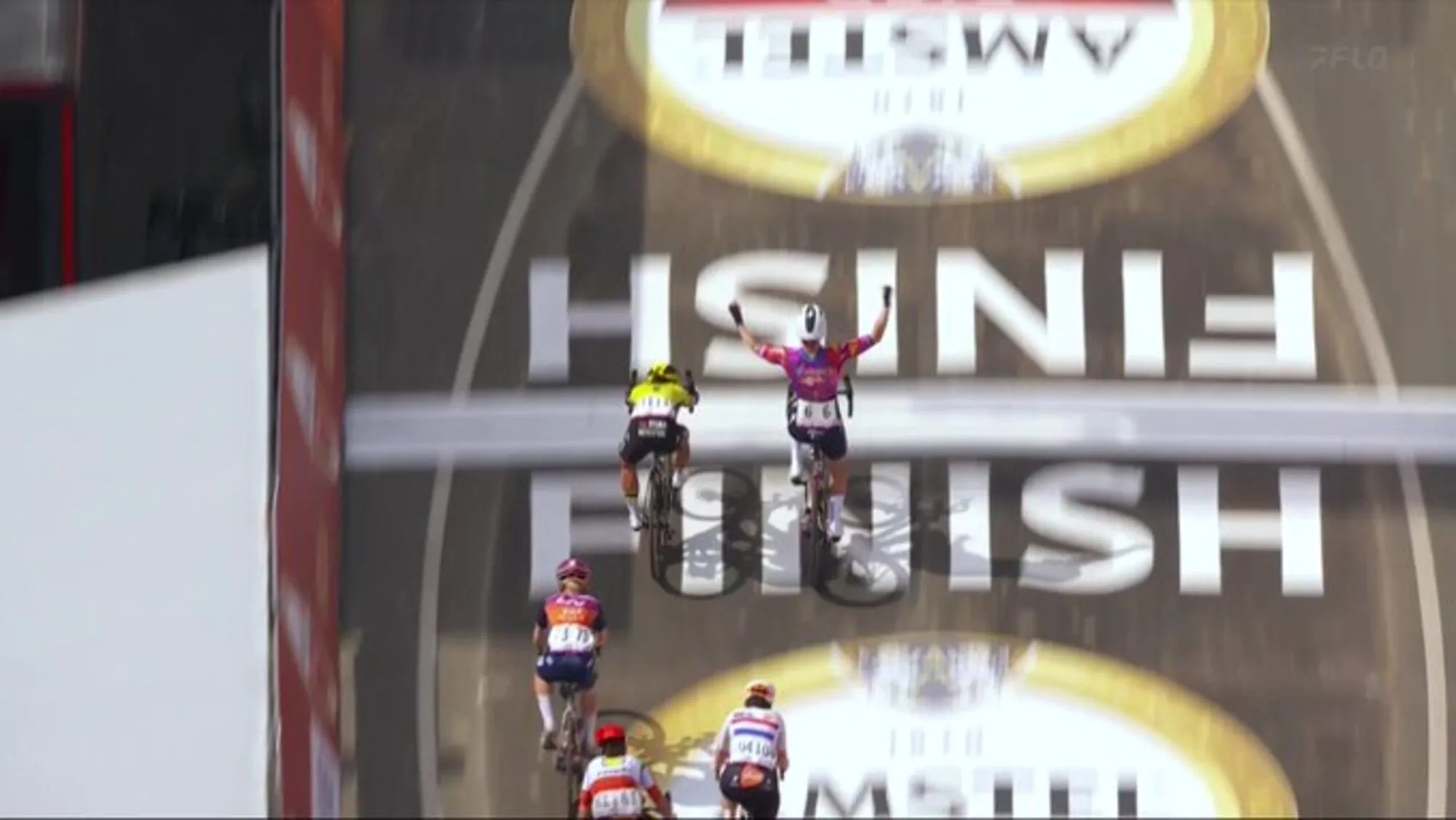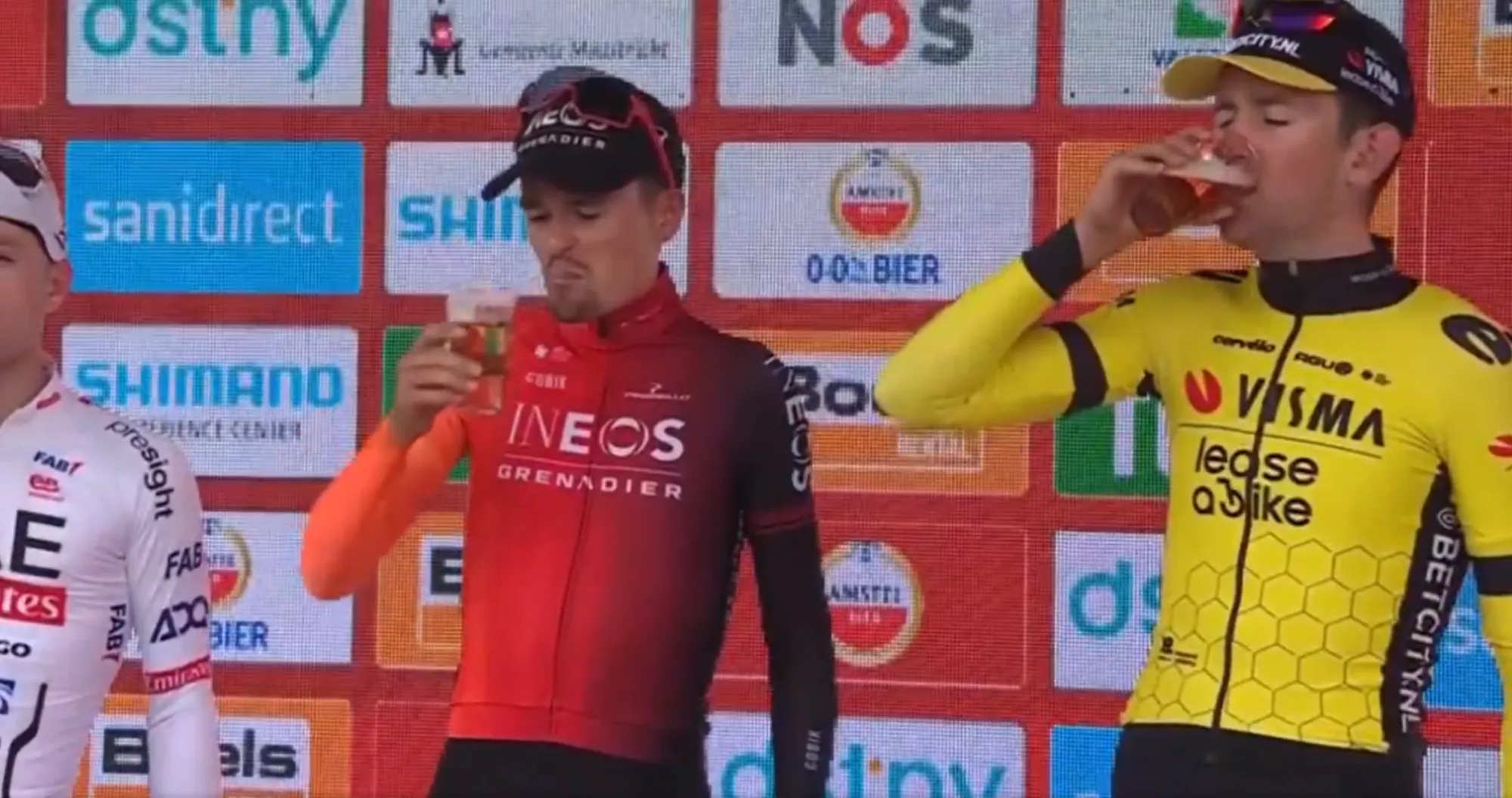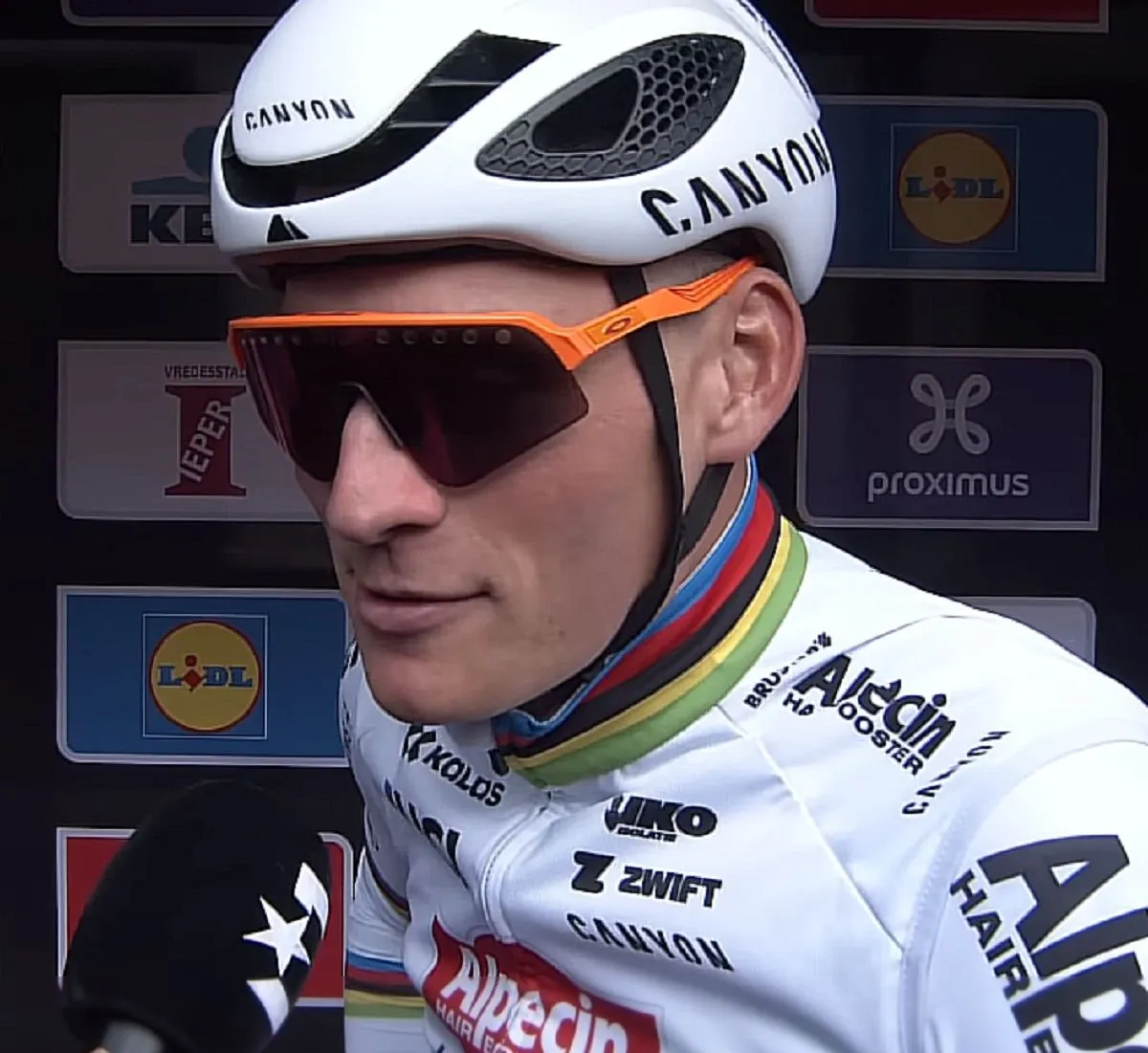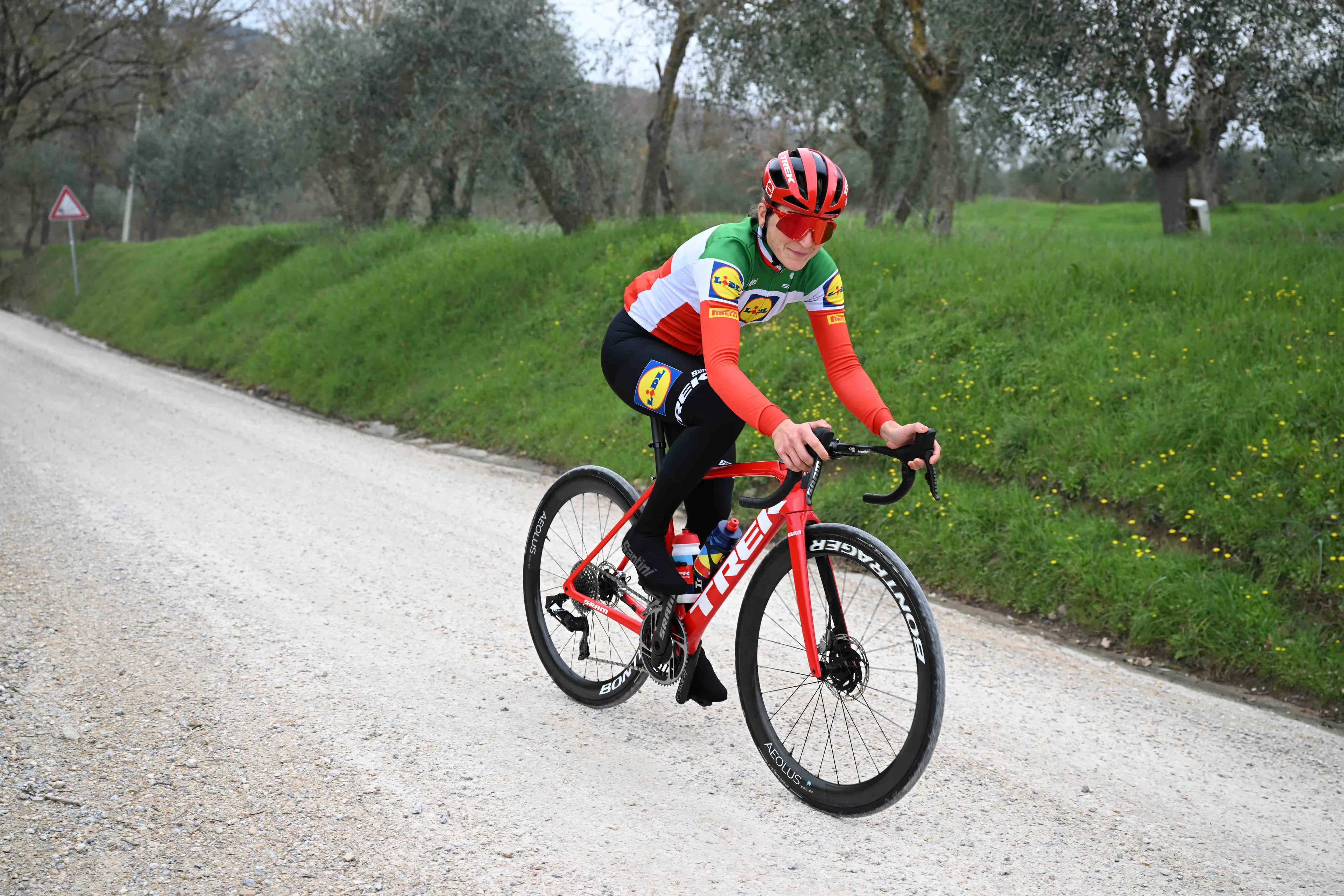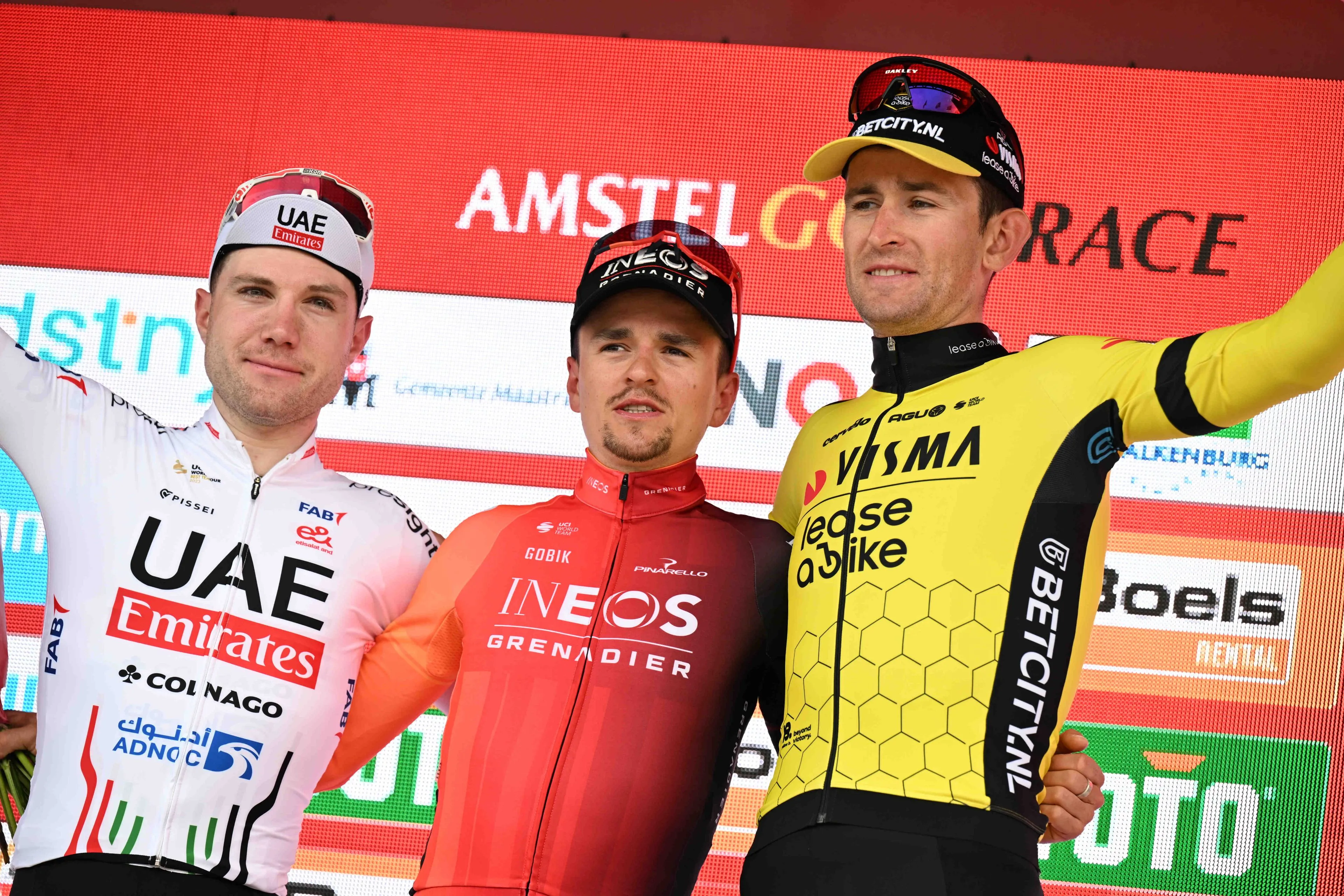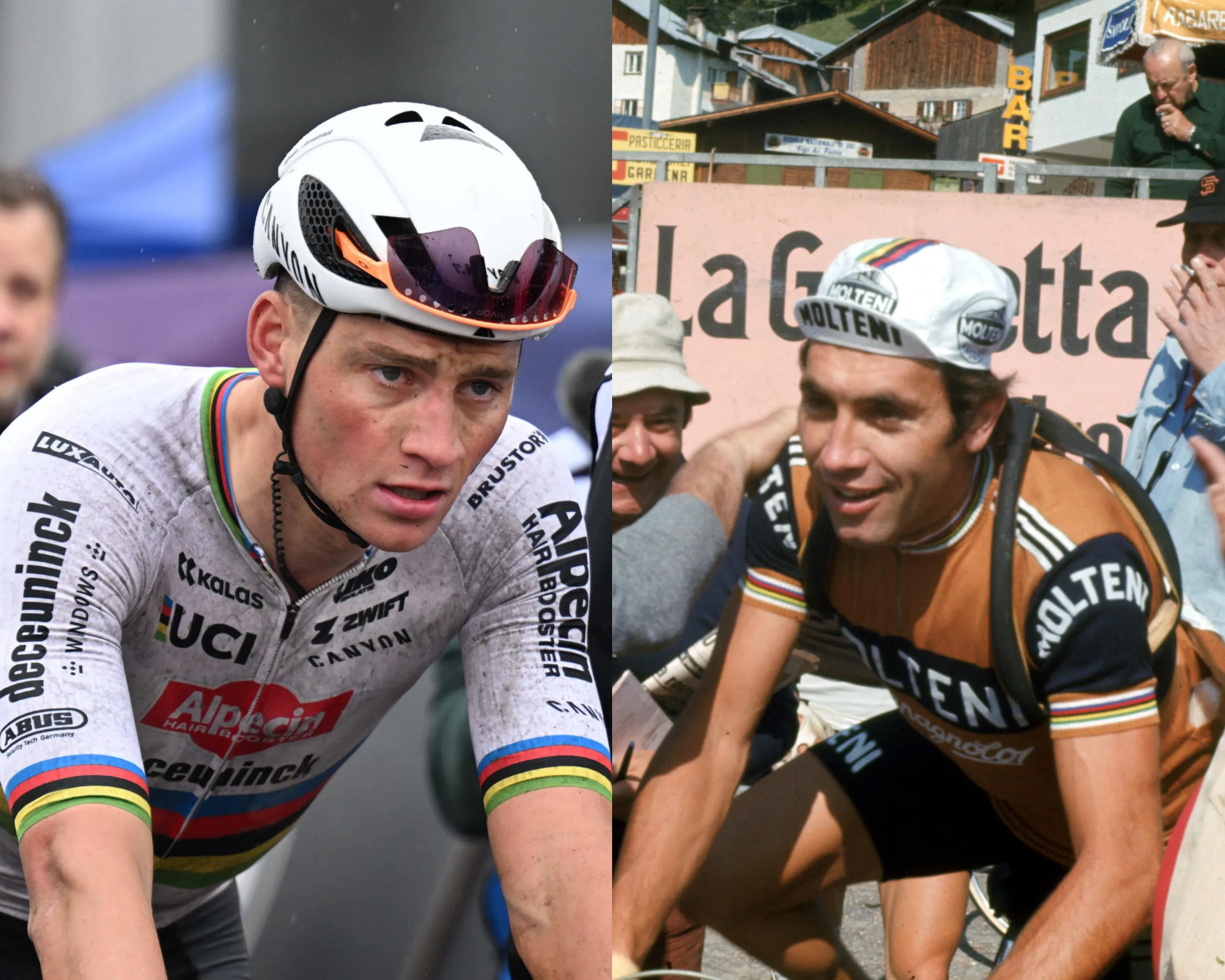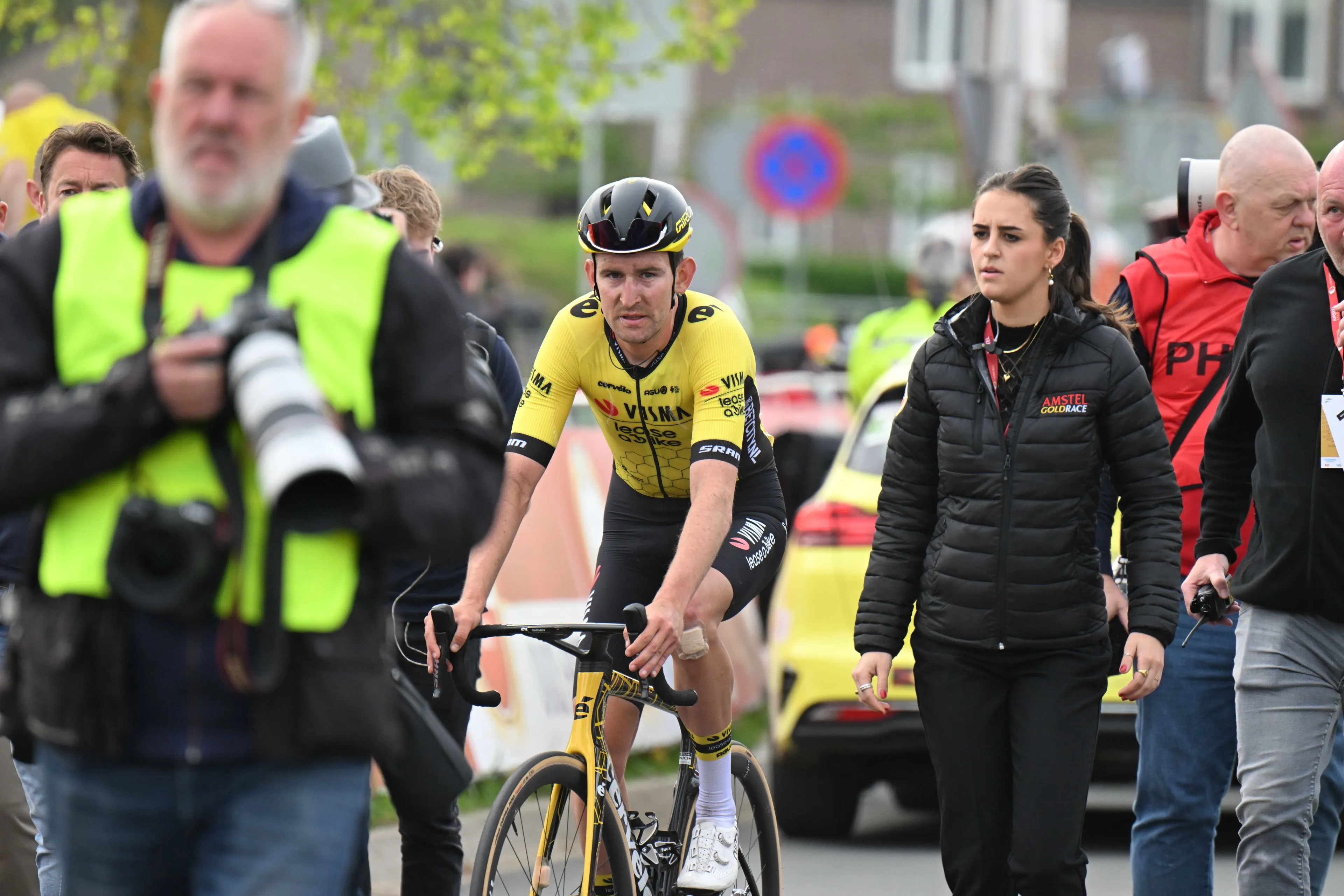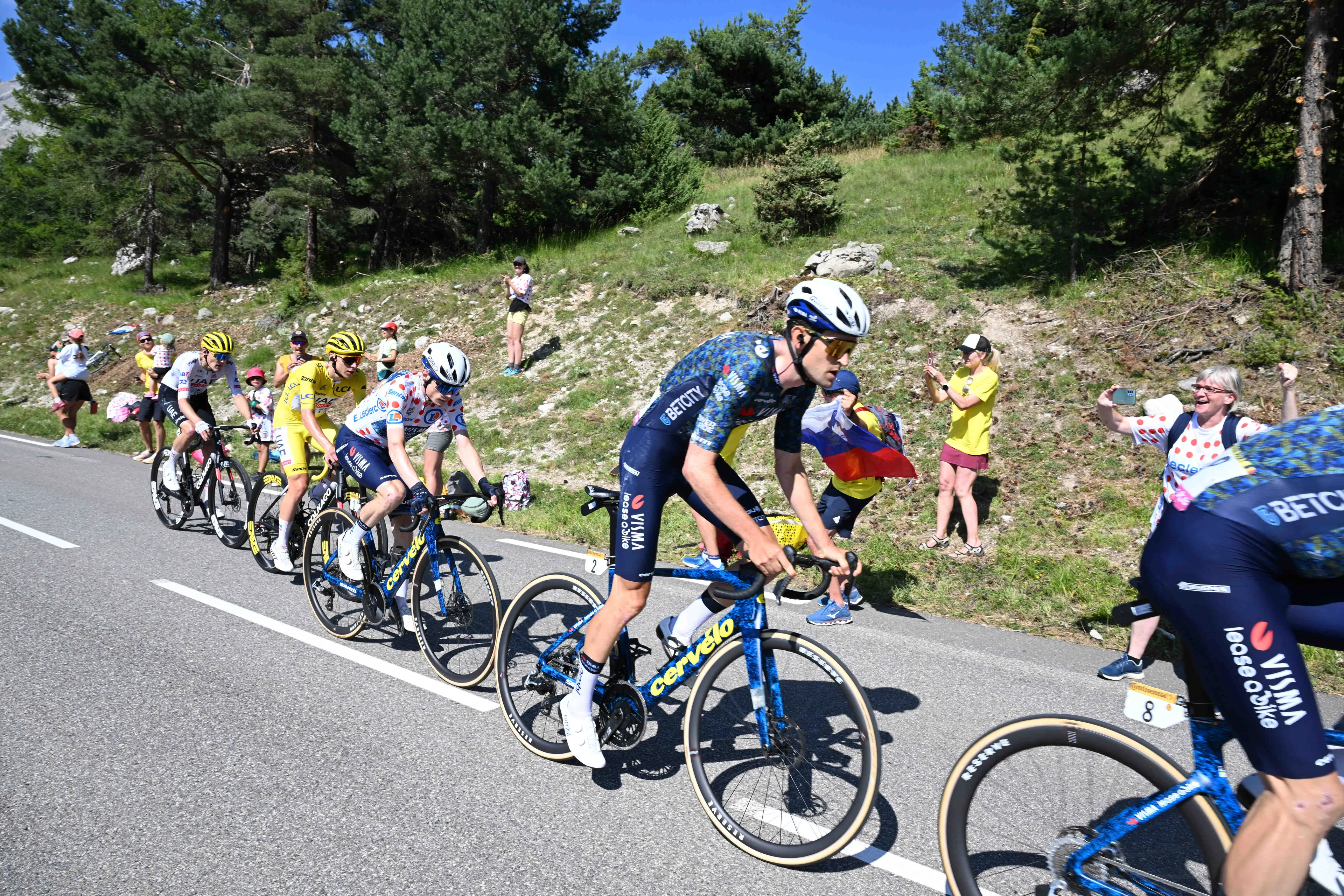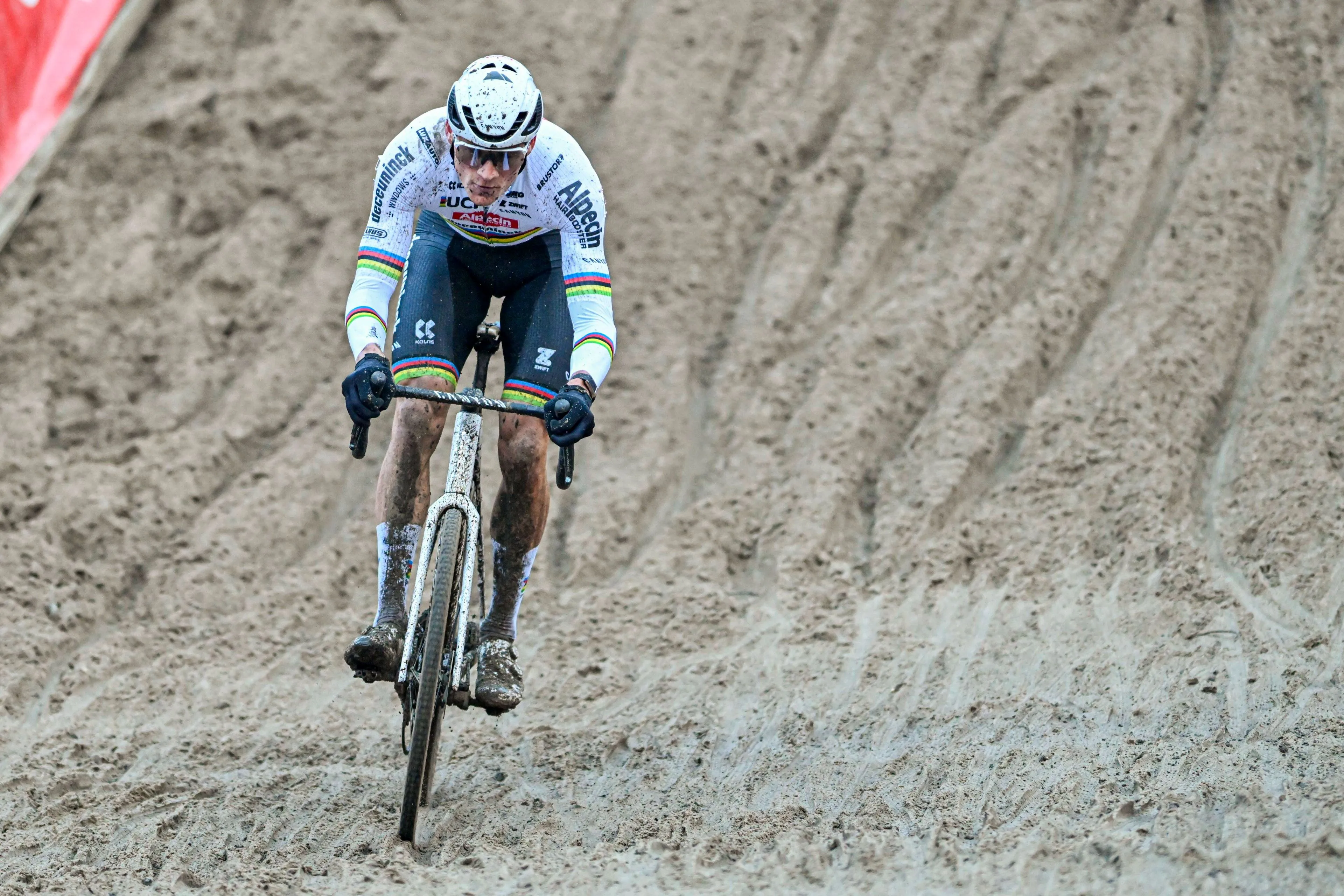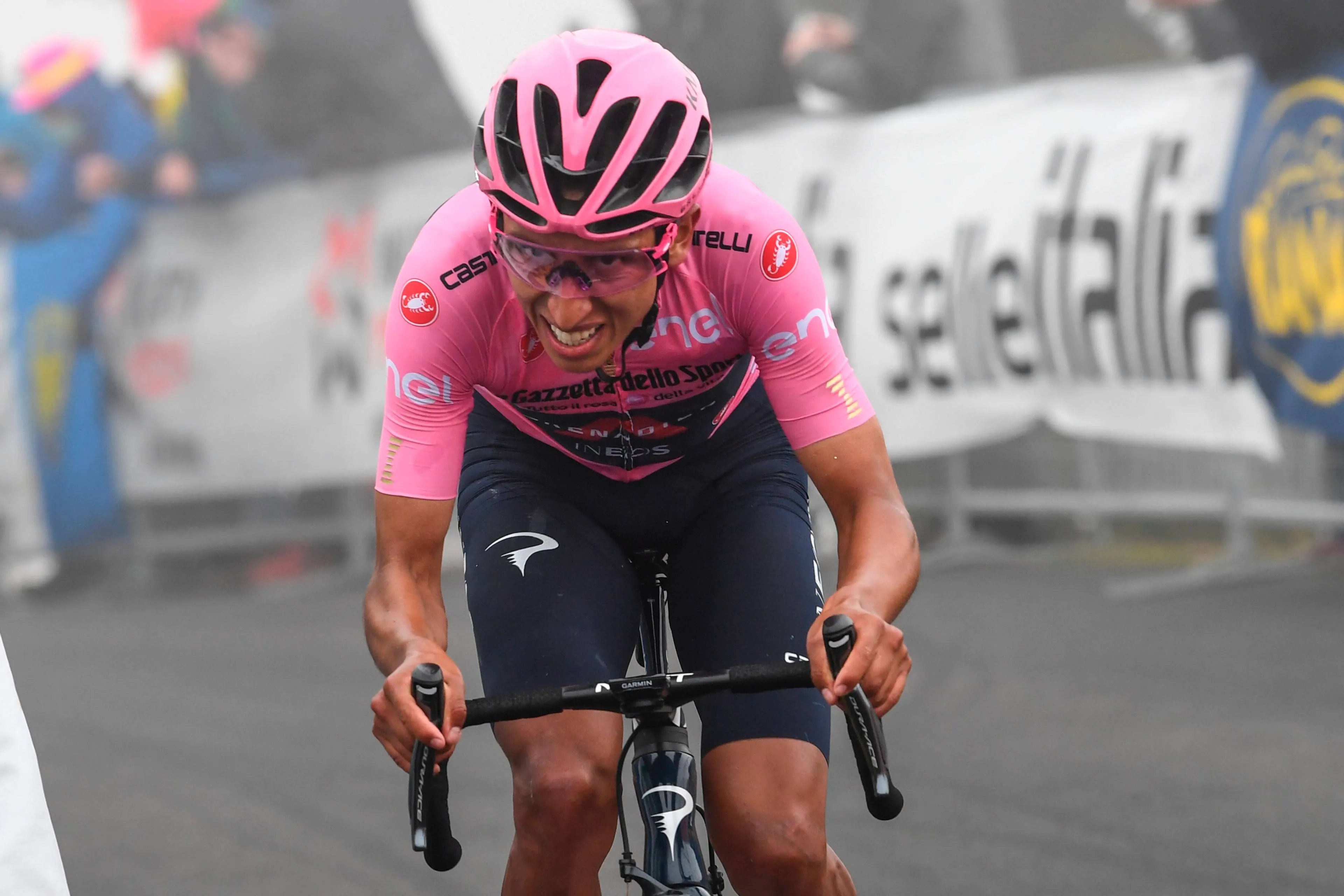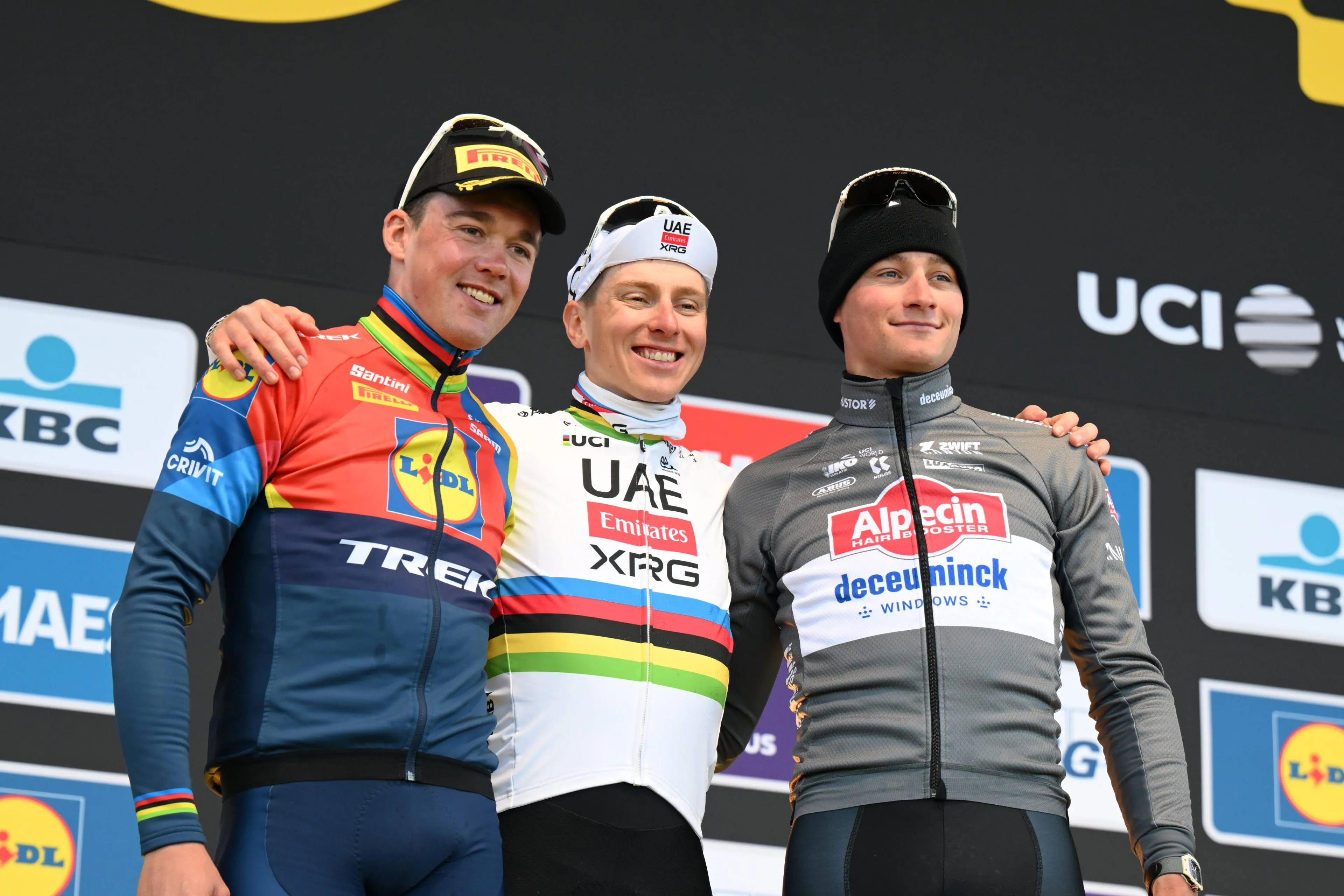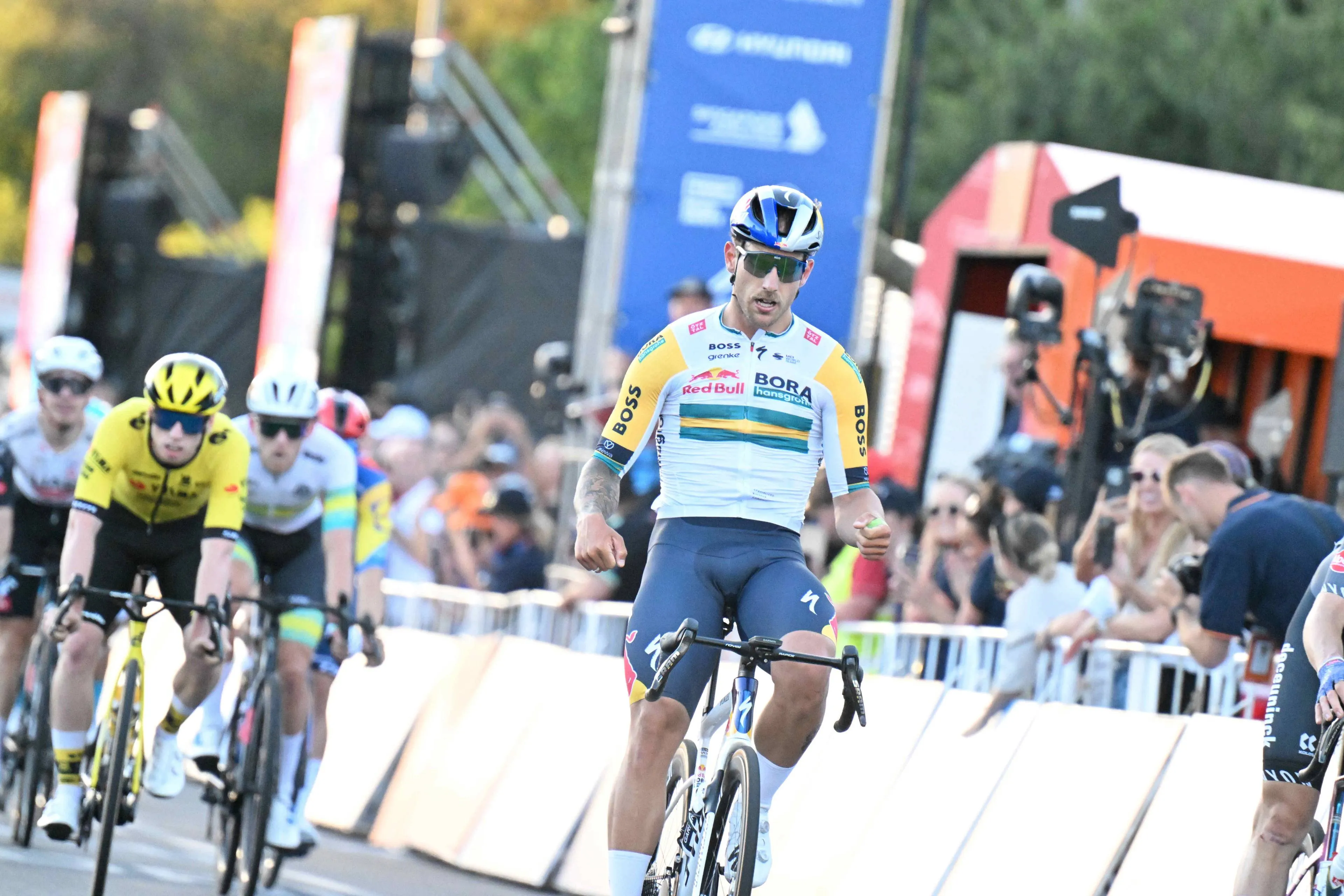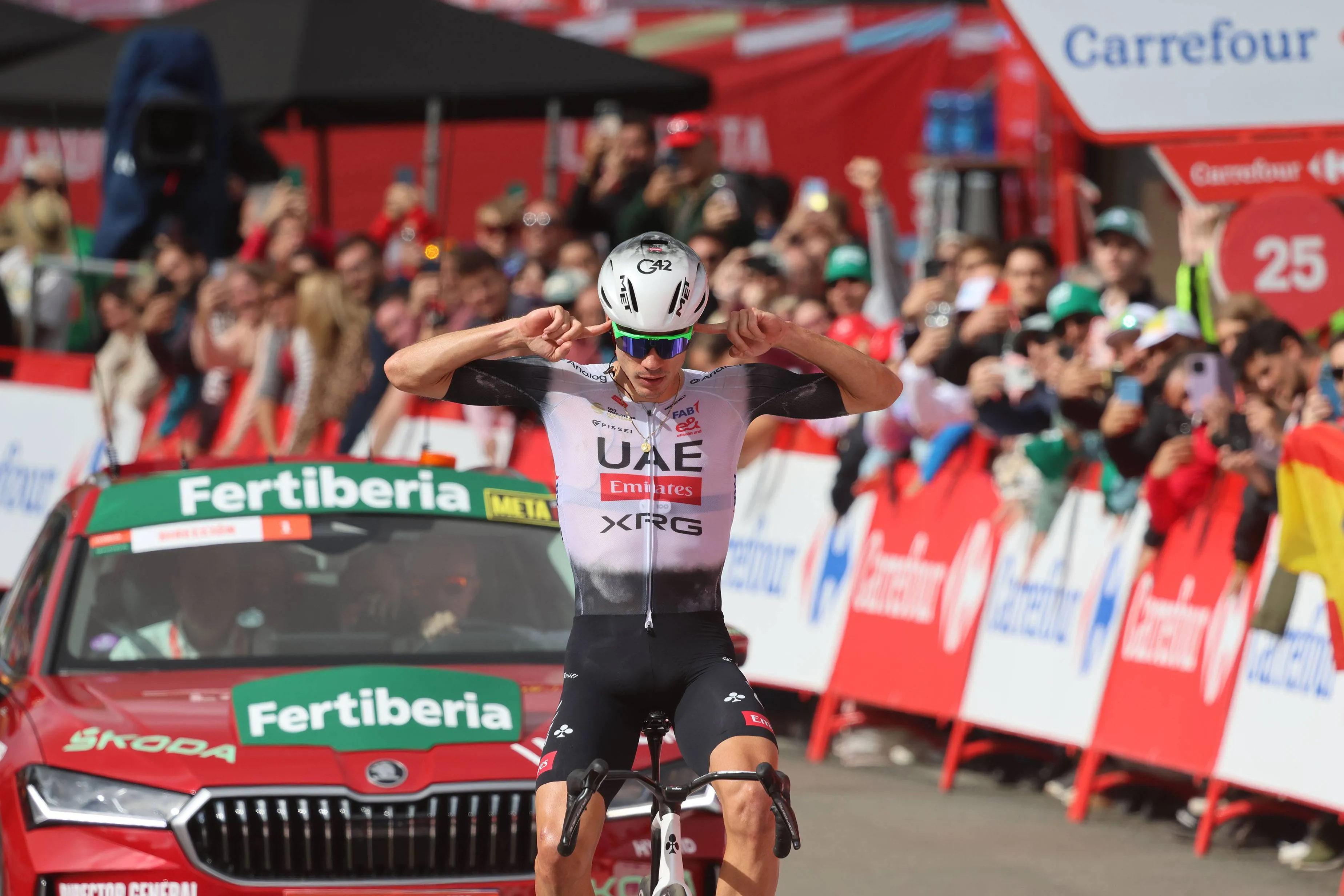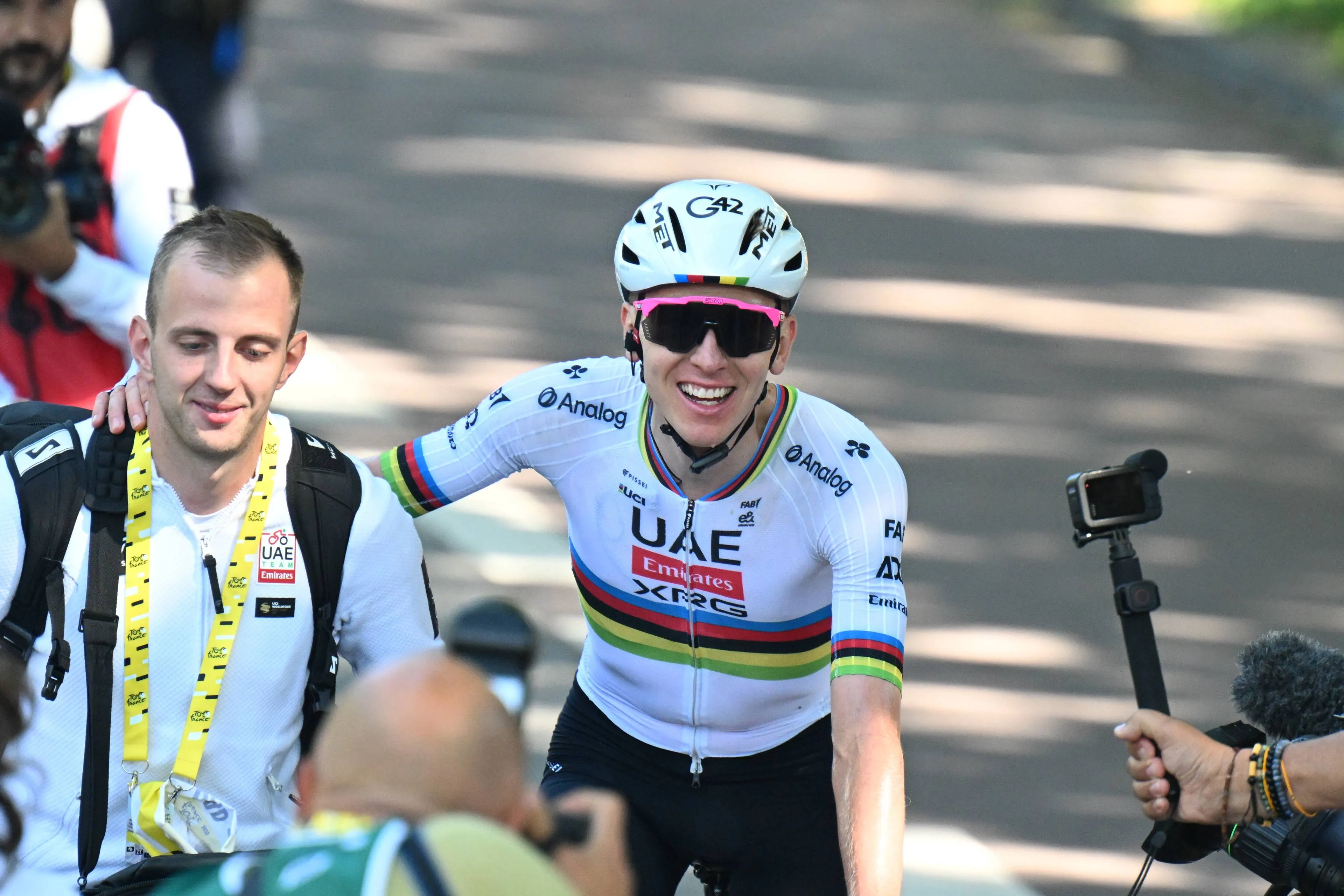Tom Pidcock does not like beer and Mathieu van der Poel is actually human - Five things we learned from the 2024 Amstel Gold Race
CyclingMonday, 15 April 2024 at 19:30
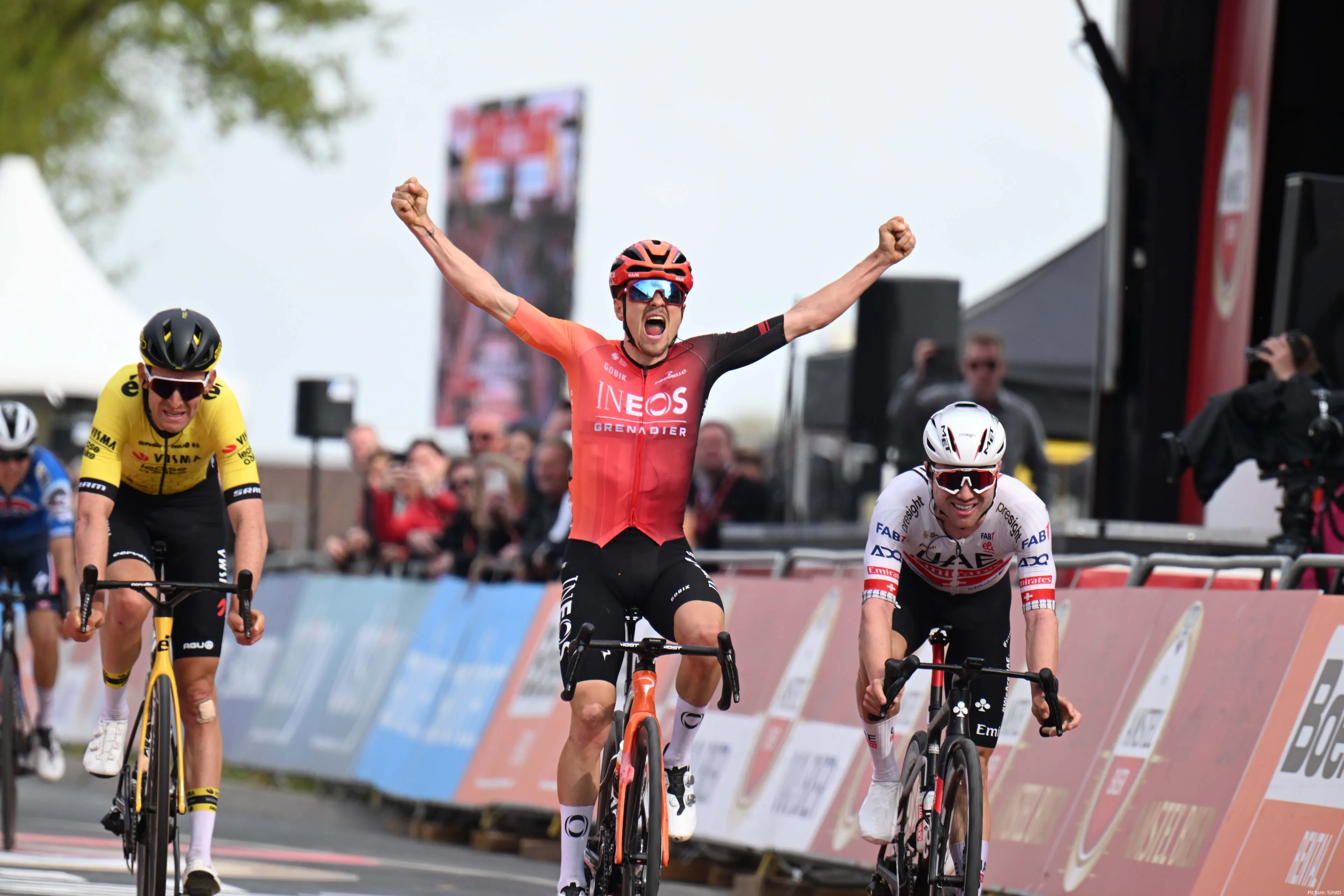
From Lorena Wiebes’ early celebration to Elisa Longo Borghini’s attacks on the Cauberg, the 2024 editions of the Amstel Gold Race had it all. Here’s five things that we learned from Sunday’s races...
Never celebrate too early
Celebrating before the finish line. Fine if you are away solo and cruising to the victory with a sizeable gap on those behind you, but not so much if you’re in a bunch sprint with other fast riders bearing down upon you.
It’s a mistake that riders have made throughout the history of the sport and yet nobody ever seems to learn their lesson. We have seen it countless times, where a rider will stop pedalling, sit up in the saddle and raise their arms aloft in victory, only for another rider to come from behind and snatch away the win.
However, we have rarely seen someone do it quite as emphatically as Lorena Wiebes at the Amstel Gold Race. She began to celebrate what she thought was a guaranteed win with more than ten metres to go in the sprint, before Marianne Vos ducked underneath her and threw her bike at the line to take the victory.
Read also
It is clear that Wiebes got a bit carried away, as she called it a “hard learning lesson” in her post-race interview. But why is it that riders are incapable of delaying their celebrations until they have actually won the race? They have more than enough time to celebrate after the finish line and if they held off for a second or two longer, then they would not run the risk of becoming a feature on the next YouTube compilation of ‘sports fails’.
A lot of credit still has to go to Vos though, as she kept sprinting all the way to the line and used her experience to execute the bike throw perfectly when she saw that Wiebes had sat up. Speaking after the race, the Dutch veteran said “I just wanted to keep going. Only on the jump I had more speed so I thought that I could have had it. Of course it’s a shame for Lorena, but I’m happy with the victory”.
Read also
Tom Pidcock likes the race but not the beer
Having finished second and third in previous editions, Tom Pidcock finally took the victory at the Amstel Gold Race, as he beat Marc Hirschi and Tiesj Benoot in the sprint to the line to become the first British rider to ever win the race.
Pidcock narrowly missed out on the victory to Wout van Aert in the photo finish in 2021, only for it to be revealed that the equipment had not been placed in the correct position for the photo to be taken. This caused many, including Pidcock himself, to believe that the British rider had actually won the race that day.
There was no ambiguity as to who had won this year’s race though, as none of the riders from the four-man breakaway could match the speed of Pidcock in the finale.
Read also
After so many strong results at the race, it is clear that Pidcock is a big fan of the Amstel Gold Race. However, as he stood on the top step of the podium, it became quite apparent that he was not so keen on the Amstel beer that he had been given as part of the prize giving ceremony.
It has become quite the tradition in recent years for the winner of the race to down the beer on the podium, with Tadej Pogačar and Michał Kwiatkowski both doing so when they won the race in the last two editions.
A small sip was enough to make Pidcock wince though, as the INEOS Grenadiers rider, who has previously stated that he does not like alcohol or even fizzy drinks, was clearly not going to continue the tradition.
Read also
Mathieu van der Poel is not a robot
This one may come as a shock to some, but Mathieu van der Poel is not a robot! It turns out that the World Champion, who recently became the first rider to achieve the Flanders-Roubaix double since Fabian Cancellara over a decade ago, is actually a human like the rest of us (albeit a slightly more talented on a bike).
Having dominated in all of the Spring Classics that he had done prior to Sunday, many expected the Dutchman to take another victory at the Amstel Gold Race, five years after his emphatic breakout win at the race in 2019.
However, it was clear that he was not on the same form that we have seen him in recently, as he was unable to follow the decisive moves when they went and he never really attempted to bridge across to the leaders on any of the major climbs.
Read also
Alpecin-Deceuninck were also not able to control the race as they had done in the Ronde van Vlaanderen and Paris-Roubaix, as Van der Poel was left isolated in a key section of the race when those decisive moves were made. With no teammates around him, he was forced to fend for himself in the chasing group as they struggled to close the gap to the leaders.
Many reasons could be given for why Van der Poel was not on same the level as he has been for the rest of his Classics campaign, but amongst all of them the toll that his victory at Paris-Roubaix would have taken on him cannot be understated.
The cobblestones in the Hell of the North are different to those found on the bergs in Flanders, as they often strain the muscles, which can leave riders feeling sore in the days after the race. This would explain why Van der Poel was able to recover so quickly after the Ronde van Vlaanderen, but was unable to make the same recovery for the Amstel Gold Race.
The effects of Paris-Roubaix could also be seen with Tom Pidcock, as he showed his blister-covered hands and said in his post-race interview that they had been causing him some muscular discomfort, as he was having to hold his handlebars differently to how he normally would.
Read also
Elisa Longo Borghini is a force to be reckoned with in the Ardennes Classics
After taking the victory in the midweek semi-Classic at Brabantse Pijl, Elisa Longo Borghini went into the Amstel Gold Race as one of the top favourites for the victory and although her result of fifth place might not seem to be that impressive on paper, it does not tell the whole story.
The Italian National Champion was extremely active in the three laps of the finishing circuit after the neutralisation of the race, as she attacked on the first two ascents of the Cauberg and pulled a small group clear with her both times.
However, a move failed to materialise, due to a lack of cohesion with the riders around her and the fact that many of those in the group behind still had fresh legs due to the lengthy neutralisation.
Read also
Ultimately, the race was not attritional enough for Longo Borghini to really make a difference, which may have changed if the organisers had not been forced to remove around 40km of racing from the route.
Her fifth place result was also fairly impressive, as she was one of the first riders to open up her sprint, but was unable to compete against the more natural sprinters, such as Vos and Wiebes.
Her performance certainly bodes well for her upcoming races at La Flèche Wallonne and Liège-Bastogne-Liège, both of which are races that she is still yet to win in her career.
Read also
Marc Hirschi is one to watch for La Flèche Wallonne and Liège-Bastogne-Liège
Despite not having lived up to expectations since joining UAE Team Emirates in 2021, Marc Hirschi can always be relied upon to perform well in the Ardennes Classics and this season appears to be no different, as the Swiss rider finished runner-up behind Tom Pidcock at this year’s Amstel Gold Race.
Hirschi was one of the main aggressors in pulling the four-man group clear that would make it to the finish. His acceleration on the climbs that caught the attention of many back in 2020 was on full display once again.
Poor positioning in the final sprint cost him the chance of the victory, as he was left boxed in, which meant that when he finally managed to find a way through, he was just unable to come around Pidcock on the line.
Read also
This type of performance could be the catalyst for a series of strong performances by Hirschi in his upcoming races, as he is a former winner of La Flèche Wallonne and has previously finished runner-up at Liège-Bastogne-Liège.
He is also in the final year of his current contract year, meaning that he will have to impress in these races if he has hopes of getting a new deal with his team. However, it could just be another flash in the pan for the 25-year-old Tour de France stage winner, as we have seen so many times before.
Read also
Bonus: Amstel Gold Race is the real sixth Monument
After watching the absolute borefest that was the 2024 edition of the men’s Strade Bianche earlier in the season, the argument for it being the sixth Monument of professional cycling was somewhat diminished.
The organisers of the Italian race made the route longer with more climbing, which meant that the race lost what made it so accessible to such a wide variety of riders. However, even with the added length the ‘Race of the White Roads’ is still nowhere near the distance of the other Monuments and it certainly does not have the history of those races either.
On the other hand, the Amstel Gold Race is definitely long enough to be considered a Monument at more than 250km in length and it has history in abundance as well.
Although it is nowhere near as old as races such as the Ronde van Vlaanderen, Paris-Roubaix and Liège-Bastogne-Liège, it still has an illustrious list of winners that includes the likes of Freddy Maertens, Bernard Hinault and Johan Museeuw among many other legendary riders.
Read also
Eddy Merckx also won the race twice during his career, which is almost a prerequisite for any race to become a Monument. More recently, other great Classics riders of our time such as Philippe Gilbert and Michał Kwiatkowski have both won this race on more than one occasion.
It has also consistently been one of the most exciting races on the calendar in recent years, as it has often been decided in a sprint from a small group, with the result often not being decided until the finish line.
The fact that the Netherlands, the cycling heartland of Europe, does not have a Monument is also perplexing. The Amstel Gold Race is the biggest Dutch race on the calendar and is the country’s only WorldTour race.
In the case of Strade Bianche, having a third Italian Monument would not make much sense, but to promote the Amstel Gold Race to the status of one of cycling’s most prestigious races in the cycling crazy nation of the Netherlands almost seems obvious.
Read also
claps 1visitors 1
Just in
Popular news
Latest comments
- Pedersons talent doesn't need to be doubted - he won the world's in Yorkshire in atypical weather for that area and that's a win in itself!
 leedorney16-12-2025
leedorney16-12-2025 - Yeah, it's basically a form of clickbait to make you click on the headline and spend a few seconds reading to find out who it is. That helps with the analytics that advertisers are looking for (i.e. how long readers are spending on the page).Pogboom16-12-2025
- The headline doesn't say anything... Right down the page tho, it says Sam Welsford 🙄 Like how fkg hards that... TO PUT IN THE HEADLINE 🙃
 leedorney16-12-2025
leedorney16-12-2025 - We are talking here about 2025/2026 season. It is obvious that everybody gets old and at some point going to be slower.averagecyclist16-12-2025
- The only way to win against a stronger rider is by using tactics. You don't work with them, let them expend energy while you remain in the wheels.abstractengineer16-12-2025
- The only way to win against a stronger rider is by using tactics. You don't work with them, let them expend energy while you remain in the wheels.abstractengineer16-12-2025
- Why is golf "unwinding in style"? Its the sport of the rich and famousabstractengineer16-12-2025
- To do that he must be in the front group and not the chase group, sucking wheelsabstractengineer16-12-2025
- Time is on Nys’s side. Give it a few years. Even MvdP will slow down one day.mobk16-12-2025
- he’s not wrong. Nys took his best shot, and missed. MVDP is only going to get better Nys is a finished product.mij16-12-2025
Loading
No photo finish needed 😉 #AGR24
1 Comments

